LAB REPORT
Science and Technology Making Headlines
Oct. 30, 2015

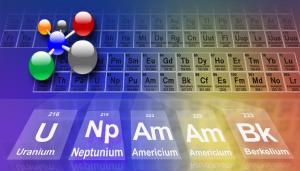
Lawrence Livermore National Laboratory scientists were part of an international team that discovered five new nuclei: U 218, Np 219, Bk 233, Am 223 and Am 229.
Finding the exotic
Lawrence Livermore scientists, in conjunction with international researchers have discovered five new atomic nuclei to be added to the chart of nuclides.
The study, conducted this fall, focuses on developing new methods of synthesis for super heavy elements. The newly discovered, exotic nuclei are one isotope each of heavy elements berkelium, neptunium and uranium and two isotopes of the element americium.
Every chemical element comes in the form of different isotopes. These isotopes are distinguished from one another by the number of neutrons in the nucleus, and thus by their mass. The newly discovered isotopes have fewer neutrons and are lighter than the previously known isotopes of the respective elements.
To date, the known Periodic Table comprises more than 3,000 isotopes of 114 confirmed chemical elements. According to scientific estimates, more than 4,000 additional, undiscovered isotopes also should exist.


Lawrence Livermore scientists and collaborators are studying switchgrass, which can grow and propagate in marginal soils, making it a good candidate for sustainable biofuel production.
Making the switch from grass to fuel
Switchgrass, a perennial native to the tallgrass prairie, is one of the most promising bioenergy crops in the United States, with potential to provide high-yield biomass on marginal soils unsuitable for traditional agricultural crops.
New research by Lawrence Livermore National Laboratory and collaborators is looking into whether switchgrass cultivation could result in an enhancement of key ecosystem services such as carbon sequestration, soil fertility and biodiversity.
The team found that switchgrass can grow and propagate in marginal soils that are unsuitable for agriculture crop plants, but makes it a good candidate for sustainable biofuel production.

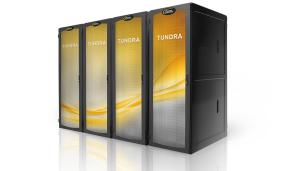
Scalable computing clusters -- like the Tundra clusters being procured from Penguin Computing -- are designed to be connected like Legos to create a more powerful system.
Computing like a tundra
Penguin Computing has been awarded a contract with the Department of Energy's National Nuclear Security Administration (NNSA) to install the company's Tundra Extreme Scale series.
The systems are being procured under NNSA's tri-laboratory Commodity Technology Systems program, or CTS-1, to bolster computing for national security at Lawrence Livermore, Los Alamos and Sandia national laboratories. The resulting deployment of these supercomputing clusters will be one of the world's largest Open Compute-based installations.
The three-year contract provides the Advanced Simulation and Computing (ASC) program with high-performance computing clusters for its mission to ensure the safety, security and reliability of the nation's nuclear deterrent without underground testing — a program called stockpile stewardship. The ASC program brings together the computing capabilities and expertise at NNSA's three national laboratories.
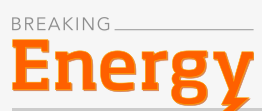
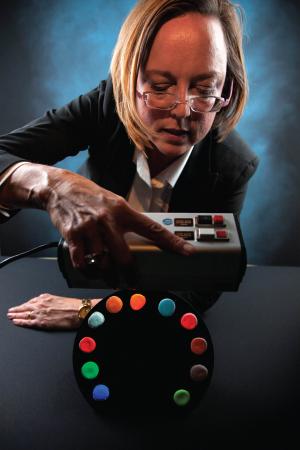
Nerine Cherepy of Lawrence Livermore displays commercial phosphors (six samples from bottom left of semi-circle) and phosphors being developed by LLNL and collaborators.
Seeing the light through the phosphors
General Electric, Lawrence Livermore and Oak Ridge national laboratories have created new kinds of fluorescent lighting phosphors that use far less rare-earth elements than current technology. Phosphors are the substances inside fluorescent tube bulbs that make them glow.
Rare-earth elements are hard to come by. The United States has access to a limited amount of rare-earth elements and relies on imports.
Today the phosphors in fluorescent lighting consume more than 1,000 metric tons of rare-earth oxides yearly, including europium (Eu), terbium (Tb), cerium (Ce) and lanthanum (La), as well as even larger amounts of yttrium (Y) oxide.
The team is looking to replace the current triphosphor blend discovered more than 30 years ago (based on a mixture of blue, green and red emitters) because of its high rare-earth consumption.

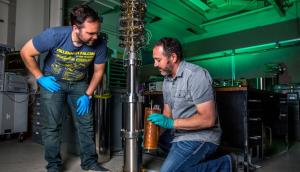
Observations have provided hints that the dark matter around one of the central four merging galaxies is not moving with the galaxy itself.
The force all around us
In the 1930s, scientists observed evidence of an unseen force moving galaxies at a speed different than expected, dubbing it 'dark matter.'
In 2015, scientists at Lawrence Livermore National Laboratory used the Vulcan supercomputer to test a variant dark matter theory.
A team of physicists, part of the Lattice Strong Dynamics collaboration at LLNL, realized that clarity calls for some supercomputing. They recently performed a computation that possibly explains the existence of a yet-to-be-deciphered phenomenon known as dark matter. Since dark matter makes up around 83 percent of all matter in the universe, this is a very big deal.
The team’s "stealth dark matter" theory, however, claims that dark matter is created through a darker, "stealth" form of quantum chromodynamics, a theory that also explains the strong nuclear force that holds the nucleus in all atoms, in every part of our visible world.





